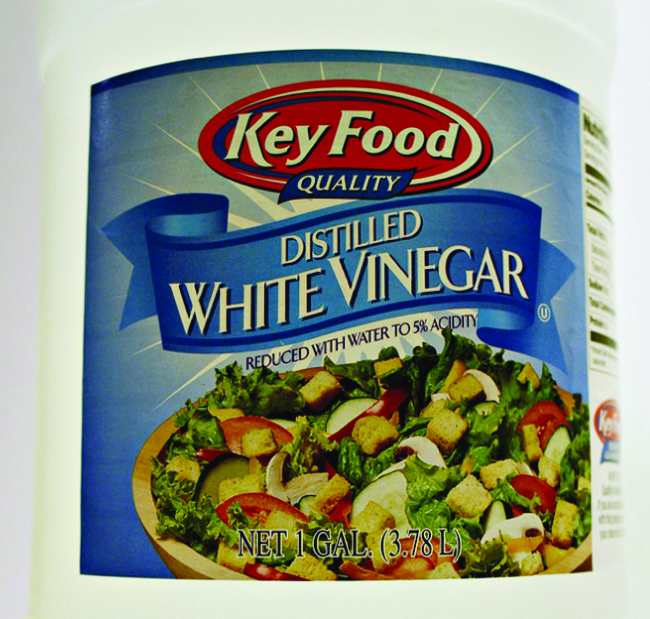Example 13.9: Determination of \(K_{\mathrm{a}}\) from Equilibrium Concentrations
Acetic acid is the principal ingredient in vinegar ( Figure 11); that's why it tastes sour. At equilibrium, a solution contains \(c_{\mathrm{\ce{CH3CO2H}}} = 0.0787\ \mathrm{M}\) and \(c_{\mathrm{\ce{H3O+}}}\)\( = \)\(c_{\mathrm{\ce{CH3CO2-}}}\)\( = 1.18\times 10^{-3}\ \mathrm{M}\) What is the value of \(K_{\mathrm{a}}\) for acetic acid?. Figure 11Vinegar is a solution of acetic acid, a weak acid. (credit: modification of work by “HomeSpot HQ”/Flickr)
Figure 11Vinegar is a solution of acetic acid, a weak acid. (credit: modification of work by “HomeSpot HQ”/Flickr)
Solution
\([\ce{CH3CO2H}]_{\mathrm{eq}}\) \(= 0.0787\)\([\ce{H3O+}]_{\mathrm{eq}}\) \(= 1.18\times 10^{-3}\)
\([\ce{CH3CO2-}]_{\mathrm{eq}}\) \(= 1.18\times 10^{-3}\)
\(K_{\mathrm{a}}\) = ?
We are asked to calculate an equilibrium constant from equilibrium concentrations. At equilibrium, the value of the equilibrium constant is equal to the reaction quotient for the reaction:
\(\ce{CH3CO2H(aq)}\)\(\ce{ + }\)\(\ce{H2O(l)}\)\(\ce{<=>}\)\(\ce{H3O+(aq)}\)\(\ce{ + }\)\(\ce{CH3CO2- (aq)}\)\(\ce{ }\)
\(K_{\mathrm{a}} = \dfrac{[\ce{H3O+}]_{\mathrm{eq}} \cdot [\ce{CH3CO2-}]_{\mathrm{eq}}}{[\ce{CH3CO2H}]_{\mathrm{eq}}}\)
\(K_{\mathrm{a}}\) \(= \dfrac{[\ce{H3O+}]_{\mathrm{eq}} \cdot [\ce{CH3CO2-}]_{\mathrm{eq}}}{[\ce{CH3CO2H}]_{\mathrm{eq}}}\)
\(\ \ \ =\dfrac{1.18\times 10^{-3} \cdot 1.18\times 10^{-3}}{0.0787}\)
\(\ \ \ =\dfrac{1.392\times 10^{-6}}{0.0787}\)
\(\ \ \ =1.77\times 10^{-5}\)